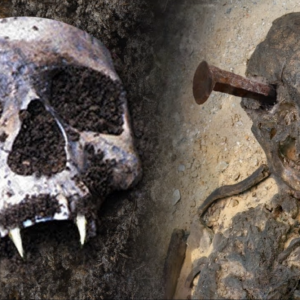The Tarim Basin, nestled in present-day Xinjiang, China, has yielded a remarkable archaeological discovery: the Tarim mummies. These mummies, dating back to periods ranging from 1800 BC to the first centuries BC, have unveiled a captivating narrative of ancient peoples in the region. Among this collection of mummies lies the well-preserved remains of an infant, one of approximately 200 corpses exhibiting intriguing European-like features, offering a glimpse into the complexities of early human migration and cultural exchanges.
These enigmatic mummies, discovered in various burial sites across the Tarim Basin, have piqued the curiosity of researchers and historians alike due to their exceptional state of preservation and the unexpected presence of physical traits resembling those of individuals from Europe. Most notably, the presence of Caucasoid features, such as fair hair and relatively tall stature, among individuals dating back thousands of years in a region far from Europe has posed intriguing questions about ancient human movement and intercontinental connections.
Recent advancements in dating techniques have unveiled a new subset of individuals within the Tarim mummy collection, pushing the origins of some specimens back even further, between approximately 2100 and 1700 BC. This revelation has rekindled scholarly interest and raised additional inquiries about the origins, lifestyles, and interactions of these ancient inhabitants in the Tarim Basin.
The discovery of these mummies challenges conventional theories about early human migration patterns, suggesting the possibility of transcontinental connections and cultural exchanges between distant regions during ancient times. The presence of individuals with distinctively non-local features in the Tarim Basin raises questions about the origins of these people and their interactions with indigenous populations in the area.
Archaeological excavations and scientific analyses, including DNA studies and isotopic research, have provided valuable insights into the lives and origins of the individuals interred as mummies in the Tarim Basin. These investigations aim to unravel the complexities of the social, cultural, and genetic dynamics of ancient populations in this region, shedding light on the intricate tapestry of human history.
The well-preserved mummy of the infant, along with the diverse array of Tarim Basin mummies, serves as a time capsule, offering a window into ancient civilizations, their customs, and potential migration patterns that have shaped our understanding of human history. As research continues to delve deeper into the origins and identities of these ancient peoples, the Tarim mummies stand as a testament to the rich tapestry of human diversity and the mysteries that still await discovery within the sands of time.



